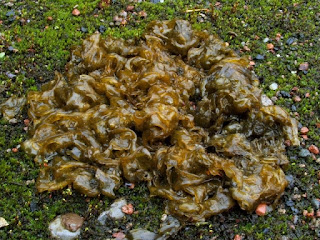Altruism,
within the human species, is where someone does something nice for another
person with no calculated expectation of a reward for it. Of course, if there
were never any rewards for people doing good deeds, this behavior pattern would
never have evolved in humans. Everyone who does a good, altruistic deed at
least hopes that he or she will receive some reward, directly or indirectly,
but does not do a calculation in advance of the deed. There often isn’t any
time for such a calculation. The calculation was done by natural selection in
millions of years of our evolutionary ancestors, and today it is instinctual.
In the past, doing good deeds was profitable. It remains so today.
But
altruism is under attack in Texas. Everyone has heard about the Texas abortion
law, which empowers anyone (not even a Texas resident) to sue anyone else whom
they suspect, even if they cannot prove, of providing, or even “aiding or abetting,” an
abortion in Texas. The Texas law establishes an inducement: the plaintiff can
get $10,000. Suppose the defendant is innocent. The defendant has to prove his
or her innocence in court, a lengthy process, and legal fees can be very
expensive. The law specifies that the defendant cannot recover those fees,
presumably even for a frivolous suit. Somebody can sue me because they claim
that they think I helped someone get an abortion, even in the absence of
evidence, and I am stuck with the time and expense of proving myself innocent.
The
major thing about this law is not that it is about abortion. It is that the law
takes a Texas aim at altruism. It incentivizes citizens to turn against fellow
citizens for profit.
Political
conservatives, especially gun-nuts, have long taken aim (literally?) at
altruism. They promote a sign in which one neighbor proclaims that another
neighbor does not have a gun. This amounts to inviting criminals to burglarize
the gun-free house and perhaps to kill the owner. The gun-nut neighbor does not
have the guts to go and kill his neighbor himself, so he puts up a sign
inviting criminals to do the job for him. This is a totally blatant attack on
the goodwill of one citizen for another. This is common enough of an occurrence
that you can buy signs like this one on Amazon. I have searched, but found no
indication, that this is a joke. Please, let it be a joke—but I fear it is not.

I thought it was against the law to incite one citizen to commit a crime against
another citizen. Certainly if I put up signs urging people to kill Donald
Trump, I would get in trouble for it. But this apparently does not apply to
people who want to destroy all community goodwill and turn America into a
madhouse of hatred.
As
it turns out, the worst that people like me feared from the Texas abortion law
has not yet come to pass. It was too extreme even for most conservatives,
except for the legislators and governor who thought that Texans would all
admire them for trying to destroy community goodwill. Apparently even most
Texas Republicans do not want to see their state become a madhouse of hatred. There
have, at the time of this writing, been only two lawsuits filed. One of them
was from a disbarred Arkansas lawyer. As you might expect from a lawyer who
breaks the law, he was allowed to sue for $10,000 so he sued for $100,000.
The
intent of the law was to scare women away from having abortions in Texas, not
because it is illegal, but because their facilitators would not be able to
afford defending themselves against the lawsuits. It is, in fact, having this
effect. This is now The Texas Way. Hey, pardner, we can use this approach for
any conservative cause. So giddy up! What else can we do with this legal
procedure?
Conservatives
all over the country are foaming at the mouth at the fact that there are
minority voters who do not share their white supremacist agenda. If an
extremist right-wing state like Texas wanted to pass a law against minority
voting, it would be quickly declared unconstitutional, even faster than they
could wipe their butts with the constitution. But they could pass a law saying
that anyone anywhere could file a suit against someone they suspect of voter
fraud, and the defendant would have to pay the legal fees. It would take months
to resolve the case. This is an easy
and, if the Texas abortion law is any guide, legal way to keep minority voters
away. Minority voters, rather than to face this kind of opposition that might
send them into homelessness, will simply stay away from the polls where
right-wing poll-watchers will take their pictures and download them directly
onto litigation documents.
Minority
voters could use this same law against white voters. I think that, in the court
in which money rules, they would not be successful. But what if they were? What
if organized minorities suppressed the white vote? That would just be one more
example of what I am saying—that the Texas way promotes neighbor against neighbor,
citizen against citizen, even if it is not necessarily an attack of
conservatives or whites against others.
Could
such a law actually work? We do not know. But it is impossible to not believe
that the Texas legislature would be willing to give it a try. While there are
lots of nice Texans—I know some—these nice Texans have absolutely no influence
on their lawmakers, who are turning Texas into a medieval fortress of
oppression. And there are plenty of pathogenic right-wingers who would be
delighted to do the same in other states.
The
only way I can be safe from lawsuit in Texas is to not go to Texas. I haven’t
been there for a long time, and I will never go there again. I encourage all of
you to also stay out of Texas. It ain’t a place for nice people.
This is supposed to be a science blog. This essay is about the science of altruism. But I really, really want to get back to writing about trees and stuff. Maybe this political craziness will slow down just long enough for me to do so. Fluff the Cottonwood Tree has another essay she wants me to post. I hope to do it soon.



















